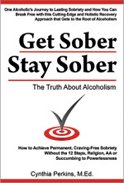Candida and Alcoholism
Candida and alcoholism frequently occur together and perpetuate one another. It is unclear in some cases, which came first, the chicken or the egg; however, were you find one, you often find the other. This is due to the fact that yeast overgrowth can result in cravings for alcohol and the consumption of alcohol encourages the proliferation of yeast.
If this issue is not addressed, it leaves the individual in recovery at very high risk of relapse. This is true not only of alcohol addiction, but addiction of any kind. According to Joan Mathews-Larson, from the Health Recovery Center in Minnesota, they have found that about 55 percent of alcohol addicted women and 35 percent of alcohol addicted men have Candida yeast overgrowth.
For those who are not familiar with this issue, Candida yeast is an organism that resides in your gastrointestinal tract. It is supposed to be there in limited numbers as it performs many important functions. However, sometimes something goes awry, which allows the yeast organism to proliferate in very large numbers and take over all the healthy bacteria in your gut. This is when problems occur.
The toxins that the yeast emits can have a significant impact on brain function and any other organ and system in the body, which results in a wide array of psychological and physiological symptoms that can drive the individual in recovery back to the bottle or their substance of choice.
Some of the most common symptoms to be experienced include cravings for alcohol, sugar or carbs, followed by anxiety and depression, but it is often the root of mood swings, aggressive behavior, explosive anger and violence, hyperactivity, attention deficit, impaired memory, learning and cognitive functions, OCD, arthritis, headaches, migraines, loss of energy, sore throat, flatulence, IBS, eczema, recurring cough, MS, bloating, and much more. It can even be a factor in more serious conditions like Crohn’s disease, autism, prostatitis, MS, schizophrenia, paranoia and rheumatoid arthritis.
Candida overgrowth can play a significant role in hypoglycemia, as it will consume your glucose, and hypoglycemia can be a primary trigger for alcohol cravings and relapse.
Overgrowth of Candida develops for two primary reasons - diet and antibiotics.
Sugar, and any food that is broken down into sugar, is the primary source of food for yeast. So a diet that is high in sugar and carbohydrates will encourage yeast to proliferate. Furthermore, this type of diet is lacking in important nutrients that are needed to keep the immune system strong, and a weak immune system will also allow yeast to grow out of control.
It's important to be aware that alcohol is the most refined sugar you can consume. It does not even have to be digested; it is absorbed directly through the gut wall. So, when you drink alcohol, it is like your giving Candida yeast an IV of its food source. Thus, why Candida often results from alcoholism.
Antibiotics not only eradicate the bad bacteria that makes you sick, but they also eliminate all the good bacteria in your gut that helps keep you healthy. However, antibiotics do not kill Candida, so this permits it to proliferate and take over the gastrointestinal tract. Even if you aren't taking any antibiotics, they are present in traditional store bought meat and dairy products. So if you aren't eating organic and antibiotic-free, then you are consuming antibiotics unknowingly.
Other common contributors to Candida yeast overgrowth include birth control pills, medication for ulcers, antacids, steroids, insufficient hydrochloric acid levels, deficiency in nutrients, acidosis, heavy metal toxicity, consuming chlorinated water, toxins in the environment, inadequate digestive enzyme levels, and drugs that suppress the immune system.
Candida releases over 70 different toxins into your body, but the two we are most concerned about in relationship to alcoholism and addiction are ethanol and acetaldehyde.
First let's talk about ethanol. Ethanol is alcohol. Candida yeast survives by fermenting sugars to generate energy it needs to live. So, if you have Candida overgrowth and you eat sugar, or any type of carbohydrates, then Candida converts it into alcohol. Therefore, even though you have not drank any alcohol, alcohol is in your body. This often results in strong cravings for alcoholic beverages or sugar that can seriously sabotage your recovery program.
Candida creates alcohol as it processes the sugar in your body. If you ’re eating a diet high in sugar and refined carbohydrates, which most people are, you are giving the Candida an endless source of food that it continuously breaks down and produces more alcohol in the process. The alcohol works as a catalyst to provide a quick fix. Candida is craving the alcohol because it wants the sugar. Thus, this is often another one of the main reasons why all alcoholics are addicted to sugar in recovery.
A phenomenon called auto-brewery syndrome can occur, where the alcohol levels in the body are so high from Candida that the individual can actually feel and appear intoxicated. Alcohol can be detected in the bloodstream and the individual may even fail a breathalyzer test, even though they have not touched an alcoholic beverage. Naturally, if the recovering alcoholic has alcohol in their body from some other source, this can lead to cravings for a drink.
Next let's look at another one of the by-products of Candida called acetaldehyde. Acetaldehyde is a neurotoxin related to formaldehyde. As with any of the toxins that Candida creates, acetaldehyde can enter the bloodstream and travel to other parts of the body. One of the areas where it collects most frequently is the brain, where it can cause damage to brain function and structure and causes deficiencies in vitamin B1, niacin, acetyl coenzyme A, and pyridoxal-5-phosphate (P5P), and it destroys essential enzymes. All nutrients that are very important for brain chemistry and overcoming an addiction.
Acetaldehyde also has the bizarre ability to combine with two primary neurotransmitters in the brain, serotonin and dopamine and form tetrahydro-isoquinolines, which are substances that are very similar to opiates and thus simulate a similar kind of opiate high. In the case of the opiate addicted, this could lead to cravings for opiates, and for the alcohol addicted could trigger cravings for a drink. Acetaldehyde is also found in traffic exhaust and cigarette smoke and can enter the body through these sources as well. Thus, another one of the reasons as to why alcoholics must stop smoking as well, if they want to overcome their cravings.
Candida toxins can also disrupt the thyroid, upset hormone balance, impair the liver, deplete serotonin and cause elevated levels of norepinephrine.
All this impact on brain function and neurotransmitters is crucial, because, as you have learned on the pages of this website, it is imbalanced neurotransmitters that is the root of addiction. In order to achieve craving-free and life-long sobriety, these neurotransmitters must be restored to balance, and that is not possible if one is dealing with chronic yeast overgrowth.
Candida sets one up for a vicious cycle of a vast amount of psychological and physical symptoms by disrupting neurotransmitters, hormones, organs and systems that, if not understood, have a high probability of leading to addictive substances for relief, or relapse, if one is in recovery.
You can learn more about the connection between Candida and alcoholism in my self-help program, or my Clean and Sober book.
Doctors that may have knowledge about Candida go by titles such as a Doctor of Environmental Medicine, a Doctor of Orthomolecular Medicine, a Naturopathic Doctor, an Integrative Medicine Doctor or Functional Medicine Doctor. However, do your homework and be armed with extensive knowledge on the topic yourself, because even those treating Candida are often limited in their knowledge base and most do not understand its connection to alcohol addiction.
References
Mathews Larson, Joan, Ph.D. Seven Weeks to Sobriety:
The Proven Program to Fight Alcoholism through Nutrition. Revised ed.
(Fawcett Columbine, 1992; Ballantine Books, 1997).
Intelegen, Inc. “Acetaldehyde:
A Common and Potent Neurotoxin How to Prevent the Damaging Effects of
Smoking, Alcohol Consumption, and Air Pollution.





